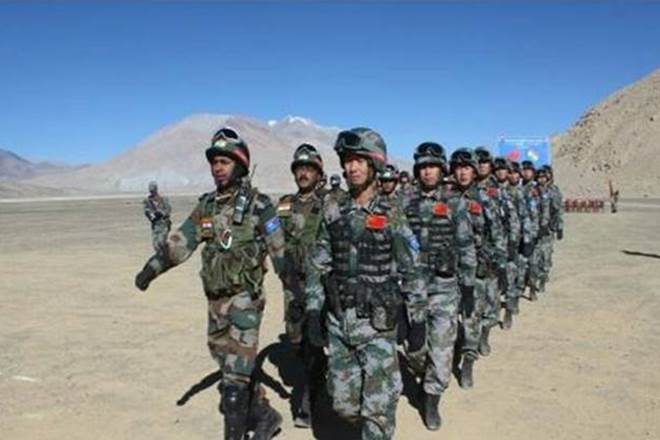
No Indian presence at 26 points along LAC, says report, warns of ‘salami slicing’

A research paper has revealed that the Indian armed forces have lost access to 26 out of 65 patrolling points along the Line of Actual Control (LAC) in eastern Ladakh.
The paper with this startling revelation was reportedly presented at the Director Generals of Police (DGP) Conference organised by the Intelligence Bureau (IB) in Delhi from January 20–22, where Prime Minister Narendra Modi and Union Home Minister Amit Shah were also present.
The points where the Indian presence is now lost starts from Karakoram pass and extends to Chumur. “Out of 65 PPs, our presence is lost in 26 PPs (i.e. PP no. 5-17, 24-32, 37, 51, 52, 62) due to restrictive or no patrolling by the ISFs (Indian Security Forces),” the paper stated.
Army’s ‘play safe’ approach
The paper has blamed the Indian Army’s “play safe” approach for the situation. It restricts the district administration and locals from venturing towards frontier areas, turning once-accessible areas into informal “buffer” zones, it said.
Also read: China govt ‘planned’ Galwan clash, says US commission report
The paper has warned that China may later claim these areas as its territory since Indian forces or civilians have not been seen there for long.
“This leads to a shift in the border under control of ISFs towards the Indian side and a “buffer zone” is created in all such pockets which ultimately leads to loss of control over these areas by India. This tactic of PLA to grab land inch-by-inch is known as ‘Salami slicing,’” the paper stated.
PLA cameras on peaks
Already, the People’s Liberation Army (PLA) has placed cameras on the highest peaks and is monitoring the movement of our forces, the report said. “This peculiar situation can be seen at Black top, Helmet top mountains in Chushul, at Demchok, at Kakjung, at Gogra hills in Hot Springs and at Depsang plains near Chip Chap River,” the paper stated. The Army instead restricts the movement of graziers.
Noting that this situation has affected age-old practices along the border, the paper has said India needs “a new approach” to deal with the unfenced border shared with China. “The steady rise in the aggression shown by the PLA in face-offs coupled with the rapid rise in the military infrastructure and build up along the LAC (often in the buffer zone) led to the complete stoppage of the barter system of trade,” it stated.
Also read: After India-China clash, Tawang to get more mobile towers for better connectivity
The paper has suggested a “positive” approach towards the LAC issue, in which civilian needs as well as military requirements are given importance. “The technological support in terms of surveillance has to help manual patrolling, complimenting with better road connectivity to camps and posts” are the way forward to manning the patrolling points.
Paper not discussed
The paper was among the 15 submitted by police officers across the country on the theme ‘Security Issues Pertaining to Unfenced Land Border’ during the conference. However, it did not come up for discussion.
Also read: Tawang incursion: What China wants and why it’s no minor incident
Accusations of ‘salami slicing’ and Chinese aggression along the LAC have been a constant feature at Arunachal Pradesh, Sikkim, and Ladakh since the 1962 Sino-Indian war. Demchok (Ladakh) in 2014, Doklam (Sikkim) in 2017, Galwan Valley (Ladakh) in 2020, and Tawang sector (Arunachal Pradesh) last month — the list can go on.
However, The Hindu quoted a defence source as saying that the LAC in eastern Ladakh is secure and “no loss of territory due to disengagement” has been reported.
(With agency inputs)


